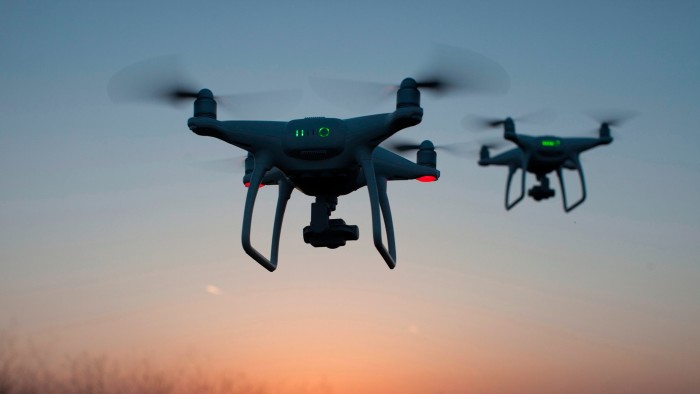Unlock the Editor’s Digest for free
Roula Khalaf, Editor of the FT, selects her favourite stories in this weekly newsletter.
Foreign buyers of Chinese drone parts are paying sharply higher prices as Beijing tightens exports of critical components amid US President Donald Trump’s trade war.
Suppliers and intermediaries who ship parts have as much as doubled their prices for foreign customers, who have few alternative sources, as Beijing strengthens enforcement of controls, said purchasers at the Shenzhen Unmanned Aerial Systems Expo in southern China last month.
The nearly $41bn commercial drone market has become increasingly important to militaries across the globe as devices meant for civilian use are deployed on battlefields in Ukraine and the Middle East.
Beijing has sought to regulate drone and parts exports to prevent their use in combat by other countries. In recent years, China has demanded exporters apply for special licences that many say are difficult to obtain, especially for component makers that export in smaller volumes.
In the past year, the government has increased the number of technologies subject to controls, while manufacturers and suppliers say enforcement has tightened in recent months as Trump threatened higher tariffs on China.
The restrictions, which apply to components with military and commercial applications, have made it difficult for global drone makers to source parts because few countries provide alternatives.
China makes 70-80 per cent of the world’s commercial drones and dominates production of critical elements such as speed controllers, sensors, cameras and propellers, according to analytics provider Drone Industry Insights.
A Turkish drone maker said it had to rely on expensive and unreliable freight forwarders to ensure supply of the restricted components it needed. Those forwarders have ratcheted up prices in recent months.
“For example, last month it was $2,000 for air delivery, but today they want almost $3,500,” said a person from the company.
A French buyer who produces targeting and surveillance drones for military use said he was heavily reliant on Chinese components. He estimated European producers were three years behind their Chinese counterparts.
“We try to make European drones, but we cannot make it with the same technologies as China,” he said.
Restrictions updated in September for thermal imaging cameras are a particular problem. Chinese suppliers now ask for double the price “because they take more risk” in seeking to avoid controls, said the French buyer.
While freight forwarders offer workarounds, they often insist buyers pay in renminbi and sign customs declarations under their own names, creating legal risks for importers, he added.
But with his supplies running low and having failed to find alternatives in locations such as Vietnam, the French buyer will have to look for suppliers willing to organise shipping themselves. “For now . . . it’s almost impossible,” he said.
Salespeople at the Shenzhen fair could be seen handing out business cards offering “sensitive goods shipment” for drones and “imitation brands”, and said they had been instructed to target US, European and Middle Eastern customers.
Khalil Esterhamlari, head of the Shenzhen-based China Iran Innovation and Cooperation Centre, said the strict customs scrutiny had forced him to cancel plans to help Iranian clients source firefighting drones. Nowadays, he is only able to export agricultural drones.
Manufacturers at the exhibition said the controls were hindering their plans to expand overseas, while many sourcing agents said they did not know why makers of larger aircraft bothered advertising to foreign clients.
Zhao Yan, a representative for Shanxi Xitou UAV Intelligent Manufacturing, a state-owned exporter of military and commercial drones, said even legally exported drones could end up on battlefields.
“It is like a kitchen knife — we produce them for cutting vegetables, but whether they can be used for other purposes is determined by the buyer,” he said. “We sell our products to compliant buyers through compliant channels. As for what they use them for, we can’t decide.”
China’s commerce ministry did not respond to a request for comment.
